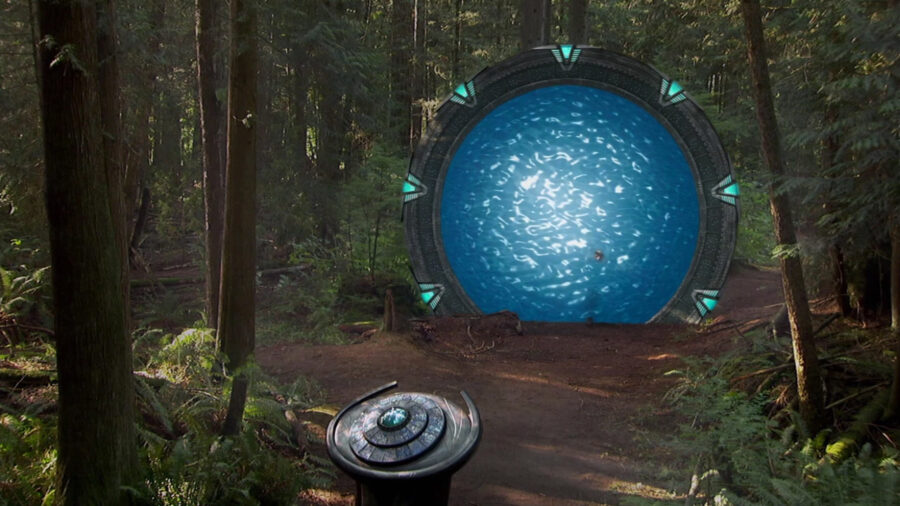The Iconic Sci-Fi Franchise That Thinks You Can’t Handle Truth, Stream It Without Netflix

If you’re in the very near future in the midst of a massive government conspiracy involving the use of ancient mythology to fight off an alien invasion, you’re probably in Stargate SG-1. There’s no shortage of adventure, but along the way what exactly did Stargate really have to say about humanity?
Our past view of the future can guide who we are in the present. And back in the 90s, Stargate SG-1 (whether it knew it or not) had a lot to say about us.

Being based on the 1994 science fiction movie Stargate was both the best and the worst thing to happen to the television spin-off Stargate SG-1. It meant a ready-made mythology and a built in audience to launch a new science fiction franchise, but it also meant they were stuck with a few ideas that never really fit the concept’s new televised science fiction format.
Stargate SG-1 debuted in 1997, smack dab in the middle of one of the most economically prosperous and optimistic periods in the history of the United States. The show, however, was produced in Canada so maybe they never got the memo. Unlike previous science fiction endeavors which imagined a hopeful and possibly better world filled with human exploration reaching out into the stars, SG-1 had something less Utopian and perhaps in its own way also more realistic, in mind.
Set in a future so near it might even be happening concurrently with our own, SG-1 is the story of a secret military agency which explores other planets as a means to find, steal, or borrow technology needed to defend our world from an evil race of alien parasites known as the Goa’uld. At first humanity’s only way offworld is the Stargate, discovered by chance in Egypt and used by Stargate Command to send their teams, particularly their best team SG-1, out into the universe. Later in the show other methods become available but the SGC mandate never really changes: Find weapons we can use to to protect Earth, and while you’re at it, don’t let the taxpayers know what’s happening.
That element of secrecy wasn’t an obstacle, it was a selling point as evidenced in the original trailer for the show’s 1997 debut.
Stargate SG-1’s unwavering opinion of humanity is that we can’t handle the truth, and it sticks to that view throughout not just SG-1 but two other series added to the franchise, long after the notion of keeping the galaxy at large a secret from everyone becomes untenable. Maybe they were simply hamstrung by their original premise, but whatever the reason for the show’s direction, SG-1’s view of humanity’s future is one in which we need protection from ourselves as much as outside invaders.
Oddly enough a lot of what they’re protecting us from isn’t really all that alien. The members of SG-1 visit hundreds of planets and each looks pretty much like the next. Actually, they all look like Canada, likely because that’s where the show was shot. But perhaps that coincidence of budget wasn’t really so far off the mark.

The rocks we’ve found on the Moon look a lot like the rocks we already have here on the ground and recent Mars photos returned from NASA’s Curiosity rover look just like any old Earth desert. In the end it could be that SG-1 actually got space exploration right: rocks are rocks, dirt is dirt, and trees are trees, no matter which planet you’re on.
In the near future of SG-1 the only way humanity has of getting on those all too familiar looking planets is using technology not our own. The show does its best to put a brave face on it by occasionally striking a hopeful note, but the truth is that the world of SG-1 is one on which humans have become a race of scavengers, patrolling the universe on borrowed technology we’ve taken from others and don’t really understand. Stargate abandons the notion that we’ll ever be able to achieve on our own, and simply accepts the fact that if humanity’s going to spread out, we must get our best technological ideas from someone smarter than we are.

SG-1’s pessimistic view of humanity and our possible future space exploration was in a sense ahead of the curve. It helped bring an end to the wide-eyed optimism of classic science fiction and had a hand in ushering in the pessimism which pervades modern science fiction. Stargate SG-1’s secret reality of theft, lies and conspiracy may not be the one I’d choose, but maybe it’s one of the most realistic views science fiction has ever offered.

STARGATE SG-1 REVIEW SCORE
If you haven’t seen Stargate yet, it’s not too late to start watching. With a movie and three TV series containing hundreds of episodes, there’s a lot there to keep any bored streamer busy.
Stargate SG-1 is the best starting point, and it’s available to watch for free on Amazon Prime Video, if you’re a subscriber.












Login with Google